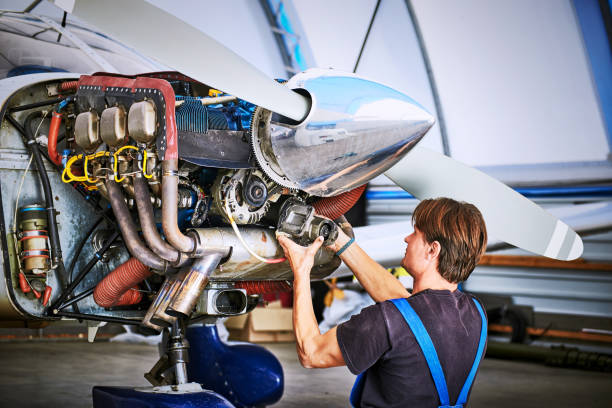The first section focuses on the importance of parts and aircraft in aviation safety incorporating the key areas in the investigation of safety-culture including; the person, the organization, or aviation safety. Furthermore, core to the post for engineers of space and aircraft construction are means of working. There is a complex and intense set of topics, and they are always focused on missions that are primarily organizational. Separate conflicts seek their assorted technological industrial problems which override in many different spheres. So, let’s look closer at some of these aspects. Embodiment of all technical solutions is inevitable as everything is self-regulating mechanism. Since aviation as multiple aspects consists, this makes it extensive network directed toward a high level of reliability.
Components of Aircraft;
The components and parts of the aircraft are manufactured and tested for many quality tests. Aircraft parts can be produced using methods of extreme accuracy and success in technology, simply a job of craft, which, of a very high-quality piece, every part is made from quality pieces made for aircraft-making.
After the complete fabrication of the parts, other means of complex testing procedures follow. Non-destructive tests such as ultrasonic, X-ray inspections ensure the parts are intact but the functions of the parts are not inconvenienced at all. That is not the end of the quality control process. The parts undergo performance testing, in which the conditions of use are replicated. In as much, this would be very useful in averting failures when the components have not escalated into major problems in flight.
Moreover, while producing the parts, a complete control of the process is also exercised. Documentation is particularly important in this case because it allows one to trace the history and compliance of any part.
The importance of maintenance and inspections of Parts of aircraft;
It can rightfully be said that maintenance and inspections stand at the backbone of aviation safety. Thanks to systematic checks, every single part of the aircraft serves its purpose in the intended way. Close-order technicians examine engines, landing gear and control systems. All these aircraft parts are inspected for the presence of mechanical defects, rust, and all kinds of dysfunction. This averts the adverse escalation of unruly potentialities.
Maintenance is planned and carried out in accordance with the specified time intervals. These routines include visuals of the scene and specialized probes like the ultrasonic and infrared analyses.
The responsibility of this procedure falls on the trained personnel is indisputable. It is their practice that helps deal with this problem as it is effortless to feel damage on the safety of a device. Finally, the influence of the documents in this regard is also very high. Operation completion such as repairs and its substitute gets documented through records creating a record that assists in future diagnosis.
Exemplary case studies which show why aircraft parts should be in perfect working order;
In one of the most notable case studies, on a commercial flight, the failure of the landing gear almost caused a catastrophe.
- The aircraft had a hydraulic failure that prevented the landing gear from being deployed. Pilots were able to execute an emergency procedure and land safely due to training and system redundancy. This event highlighted the importance of high-quality materials in the safety of the aviation industry.
- Another case is the cargo plane which had engine complications mid-air due to inferior fuel pumps. Investigations found that neglected wear and tear on the components were a major participant in this fault.
All these examples show that some of the aircraft parts are not just important; they are necessary for the success and especially for the uptight operation.
Improvements in technology and materials for aircraft parts;
Today in the aviation industry there are new technology and material development that improves the parts of an aircraft. Reinforced plastics are used instead of metals which improves fuel economy as well as performance. Such materials are able to resist adverse conditions while decreasing the weight and structure of the part.
It can be said that the production of aircraft parts has undergone a great transformation with the advent and development of 3D printing technology. Thanks to this new approach, the timeframe required for the prototyping stage is dramatically reduced. There is a yoga model for ease of production, and smoother completion times without quality loss.
In addition, nanotechnology makes it possible to create new composite materials that would be eactly lighter and stronger hidden inside with higher levels of corrosion and fatigue resistances. These innovations enhance safety, but also marries aviation engineering with ever evolving new technologies’ capabilities.
Conclusion;
the author highlights once again the significance of the aircraft parts in the safety of flying. In the field of aviation safety, aircraft parts cannot be overlooked. Each piece is crucial to ensuring that the aircraft continues to function effectively and efficiently. To ensure that the aircraft operates safely, every component, such as the engines and landing gear, is created and constructed according to precise specifications. Research has indicated that a small deficiency in the aircraft part can cause a large event if left unremedied. Such instances in practice show the need for inter-component interaction as critical.
Aircraft part quality standard is a moraine for a person involved in aviation, including but not limited to manufacturers, engineers, pilots, and regulators. Such joint efforts work towards enhancing safety for every person who uses air travel.

